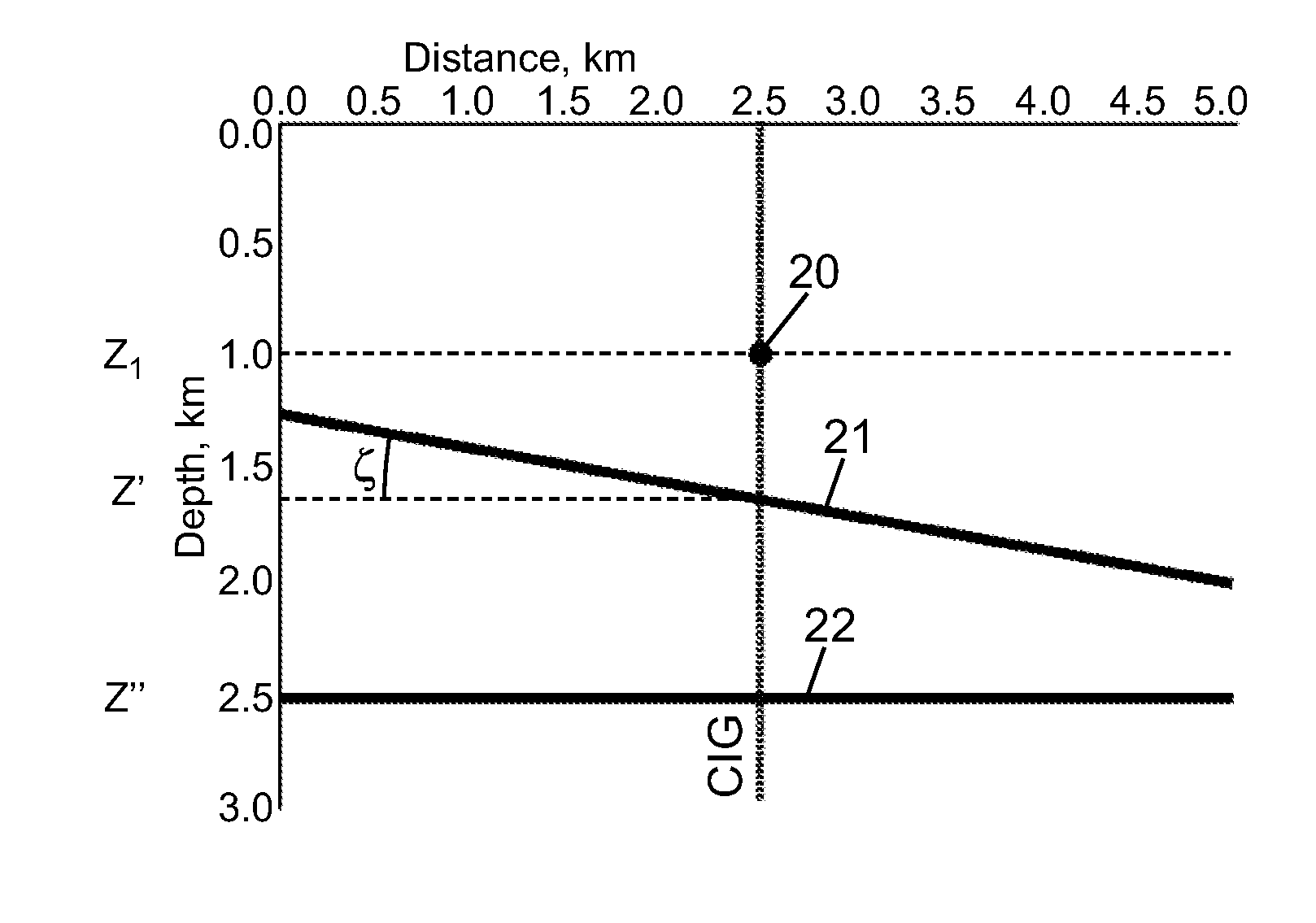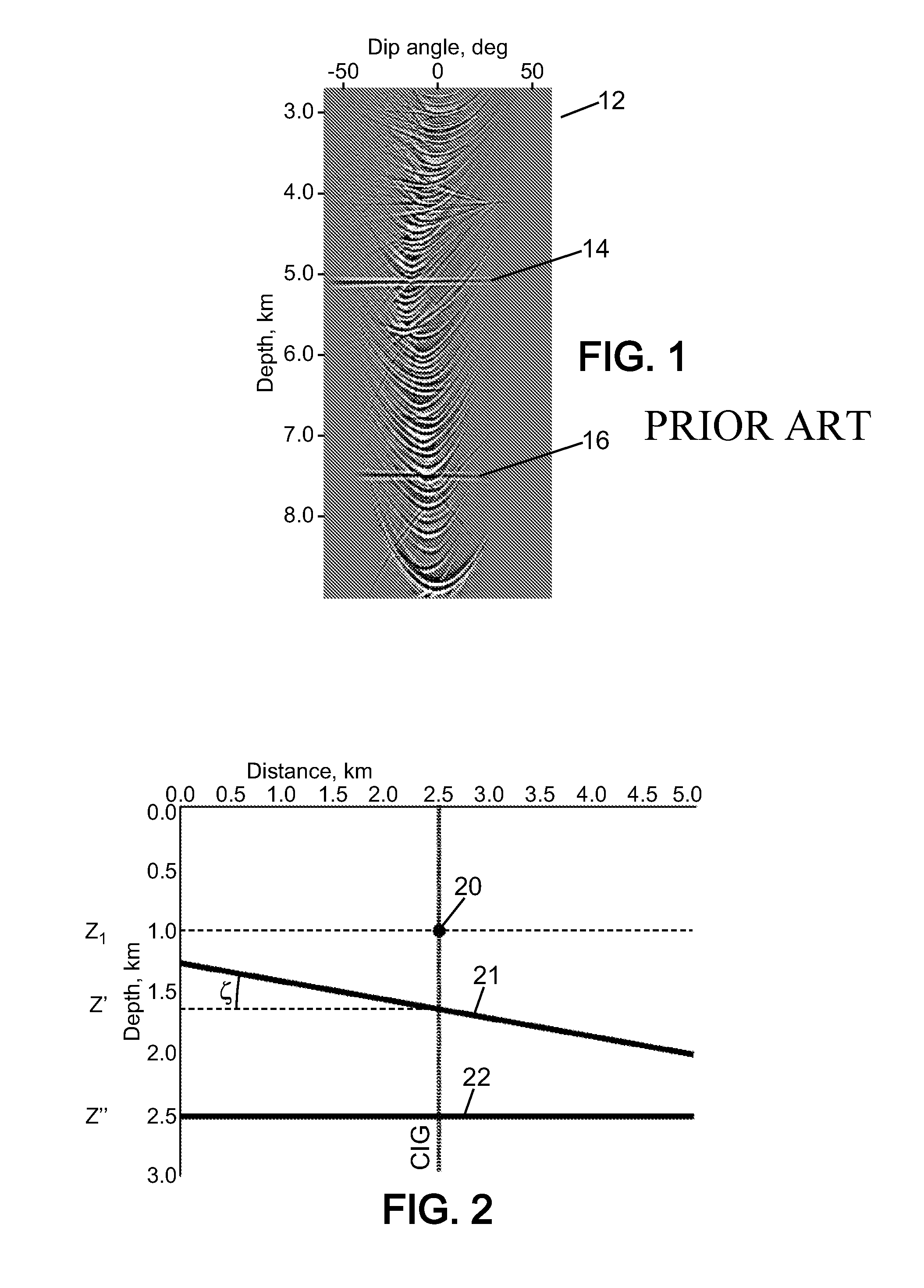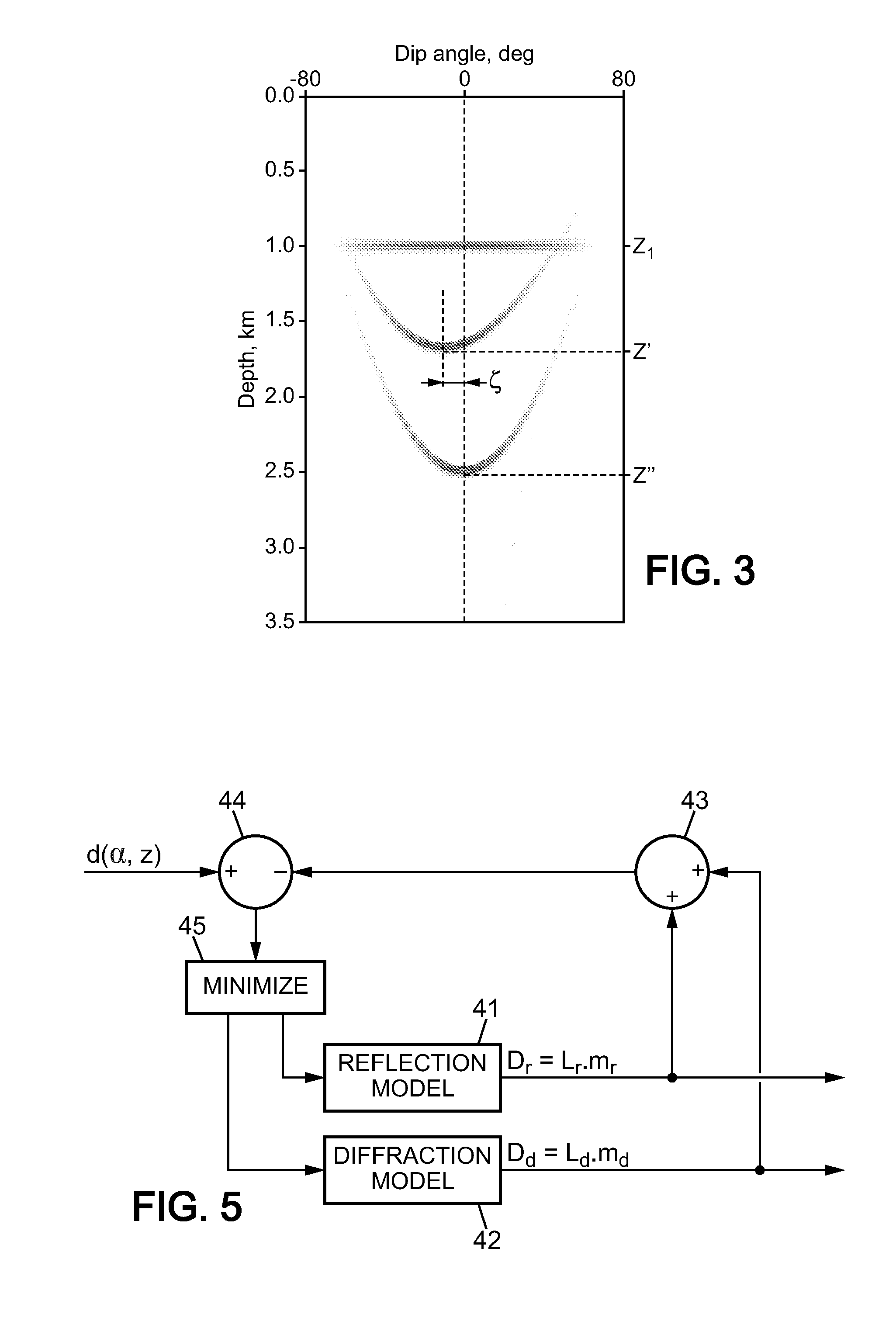Method of analyzing seismic data
a seismic data and analysis method technology, applied in seismology, geological measurements, instruments, etc., can solve the problems of difficult to distinguish diffracted events, difficult to exploit carbonate reservoirs, and noise from other directions
- Summary
- Abstract
- Description
- Claims
- Application Information
AI Technical Summary
Benefits of technology
Problems solved by technology
Method used
Image
Examples
Embodiment Construction
[0046]FIG. 2 is a schematic illustration of the subsurface with a simplified representation of backscattering structures. In this example, at the horizontal position x=2.5 (the y dimension is not shown), a diffractor 20 is at a depth z=z1, and two reflecting surfaces 21, 22 are at depths z=z′ (dip angle α=−ζ) and z=z″ (dip angle α=0). A dip angle common image gather (DA-CIG) at this horizontal position is shown in FIG. 3. It is seen that the diffractor 20 gives rise to a quasi-linear feature at depth z1, while the reflecting structures 21, 22 give rise to respective parabola or smiled-shaped features with apices located at depth z′ and z″. The apex of each parabola is shifted with respect to the position α=0 in the DA-CIG by a value corresponding to the dip angle of the reflecting structure.
[0047]In practice, the subsurface includes numerous reflecting and diffracting structures. So real-world DA-CIGs look much more complex, with many smile-shaped and linear features, and also backg...
PUM
 Login to View More
Login to View More Abstract
Description
Claims
Application Information
 Login to View More
Login to View More - R&D
- Intellectual Property
- Life Sciences
- Materials
- Tech Scout
- Unparalleled Data Quality
- Higher Quality Content
- 60% Fewer Hallucinations
Browse by: Latest US Patents, China's latest patents, Technical Efficacy Thesaurus, Application Domain, Technology Topic, Popular Technical Reports.
© 2025 PatSnap. All rights reserved.Legal|Privacy policy|Modern Slavery Act Transparency Statement|Sitemap|About US| Contact US: help@patsnap.com



